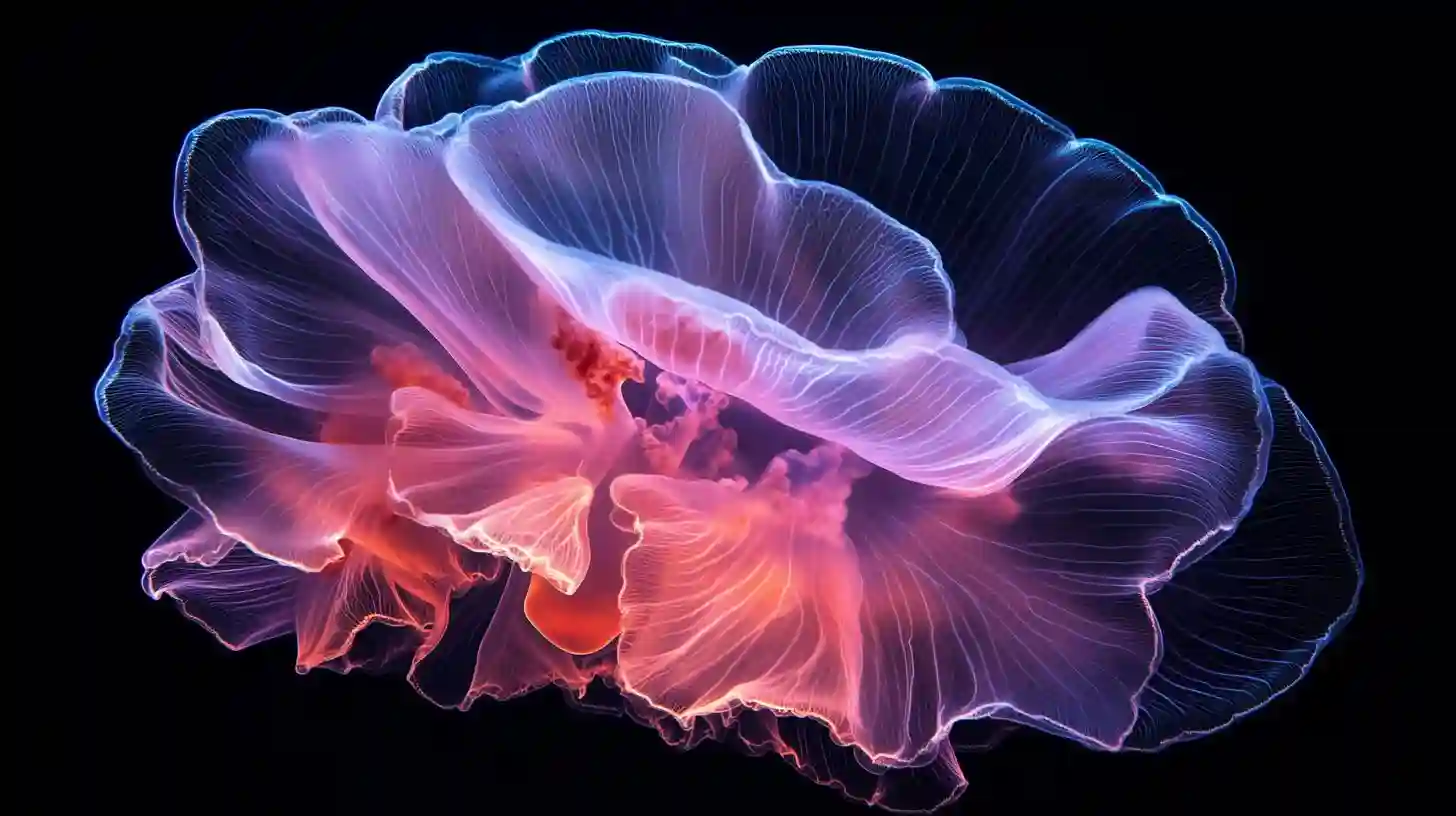
The Pink Meanie jellyfish is a fascinating creature that has captured the attention of marine biologists and enthusiasts alike. Known scientifically as the drymonema larsoni, this jellyfish is notable not only for its size but also for its striking coloration. With its vibrant pink or purplish hue, the Pink Meanie stands out vividly against the bluish backdrop of the ocean, making it a true marvel of the marine world.
One of the most intriguing aspects of the Pink Meanie is its enormous size. Reports indicate that these jellyfish can reach extensive diameters, rivaling some of the largest jellyfish species known. Their size alone is a spectacle in itself, drawing attention and curiosity from anyone lucky enough to encounter them. Observations have documented their tentacles trailing behind them, extending gracefully through the water, adding to their imposing presence. This jellyfish is not just a beautiful creature; it is a massive entity drifting through the sea.
The Pink Meanie's coloration has baffled some researchers, leading to questions about its purpose and the advantages it might provide for survival. The vivid shades of pink and purple could serve a dual purpose. They may be a form of camouflage, helping the jellyfish blend in with its surroundings, such as the colorful corals and seaweed of tropical waters, where it is often found. Alternatively, these vibrant colors might be a means of warning potential predators, indicating the jellyfish's venomous capabilities. The bloom of Pink Meanies can sometimes indicate a healthy ecosystem, signifying food availability in their habitat.
What makes the Pink Meanie even more compelling is its ecological role in the marine environment. Like many jellyfish, the Pink Meanie has a diet primarily consisting of small fish, tiny zooplankton, and other jellyfish. Although it feeds on plankton and small organisms, it can also prey on other jellyfish, including its own species. This predatory behavior underscores the complexity of marine food webs, illustrating the intricate relationships that exist in ocean ecosystems. While the jellyfish’s presence can be alarming due to its potential for stings, it also serves as a vital player in maintaining the balance among marine populations.
The reproductive cycle of the Pink Meanie is another area of interest. Like many jellyfish, they have a unique life cycle that includes both a polyp stage and a medusa stage. The adult medusa releases eggs and sperm into the water, resulting in fertilization. After a time, these fertilized eggs then develop into larvae, settling onto the ocean floor and transforming into polyps. The polyps can reproduce asexually, leading to new jellyfish medusas. This method of reproduction allows for rapid population growth, which can result in swarms of Pink Meanies when conditions are ideal.
However, changes in climate and ocean temperatures have added an additional layer of complexity to the story of the Pink Meanie. As waters warm and ecosystems shift, blooming events of jellyfish, including the Pink Meanie, may become more frequent. This rise in jellyfish populations can have profound effects on local fisheries, disrupting food chains and impacting the livelihoods of those dependent on fishing. Understanding the patterns and behaviors of the Pink Meanie can thus become crucial for managing and conserving marine resources effectively.
In recent years, interest in the Pink Meanie has grown not only among scientists but also in popular culture. Their striking appearance has made them a subject of fascination in various media, and they frequently appear in documentaries and online content, captivating audiences with their beauty and size. This newfound attention can further promote awareness of jellyfish and the need to protect their habitats. Through education and conservation efforts, there is hope that future generations will appreciate the beauty and ecological significance of these creatures.
As researchers continue to study the Pink Meanie and other jellyfish species, they uncover more about the delicate balance of marine ecosystems. The jellyfish’s unique adaptations, behaviors, and ecological roles provide insight into the adaptability of life in our oceans. With threats from overfishing, pollution, and climate change, understanding these remarkable creatures becomes increasingly important. The Pink Meanie serves as both a reminder of the marvels of the marine world and a call to action for the preservation of the intricate connections that sustain life beneath the waves. The journey of discovery surrounding the Pink Meanie is far from over, offering yet another chapter in the ongoing story of the diverse and mysterious life found within our oceans.